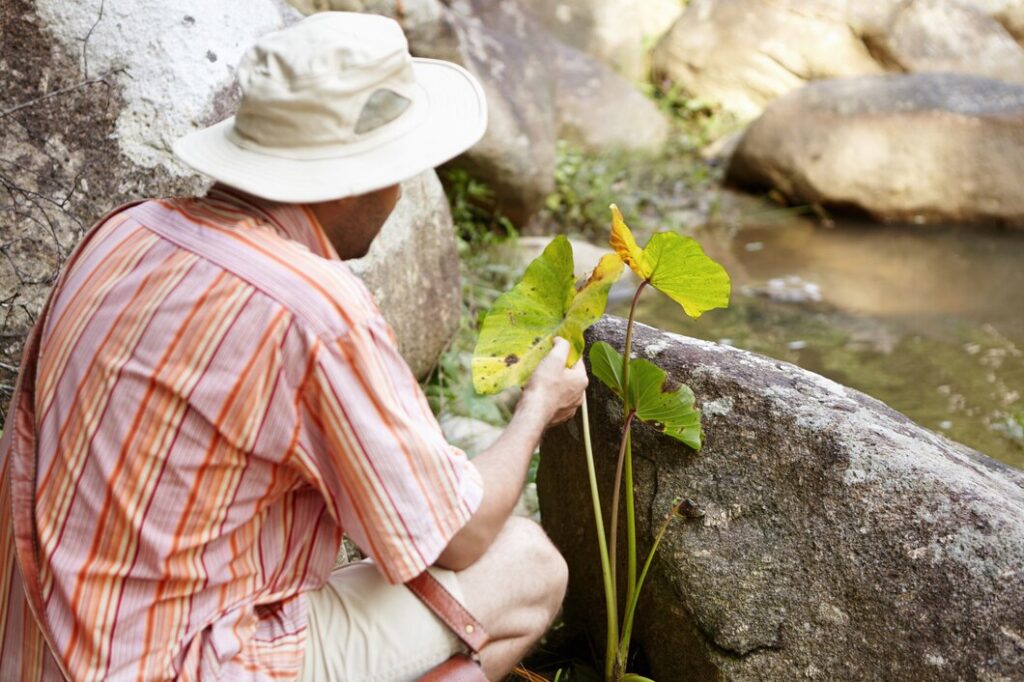Table of Contents

Australia’s Indigenous people have lived in harmony with the land for over 60,000 years, developing an intricate knowledge of the flora and fauna that sustain them. Known as “bush tucker,” native foods not only offer unique flavors but are also packed with nutritional and medicinal benefits. In this guide, we delve into the fascinating world of bush tucker, exploring its history, benefits, popular ingredients, and how you can incorporate it into modern cuisine.
🌿 What is Bush Tucker?
Bush tucker refers to the wide variety of native Australian plants and animals traditionally used for sustenance by Indigenous Australians. These foods are adapted to Australia’s harsh climate and provide essential nutrients and medicinal properties.
A Connection to Country and Culture
Indigenous communities view bush tucker as more than just food—it is deeply tied to their cultural practices, Dreamtime stories, and spiritual beliefs. Each plant or animal has a purpose, whether for nourishment, healing, or ceremonial uses. Learn more about Indigenous cultural practices here.
🌱 The Nutritional and Environmental Benefits of Bush Tucker
Bush foods are rich in antioxidants, vitamins, and minerals, making them a superfood powerhouse. Here’s why they stand out:
- Nutrient-Dense: Many bush foods have higher vitamin and mineral content compared to introduced crops.
- Sustainability: Native plants require less water and are well-adapted to Australia’s climate.
- Medicinal Properties: Many plants have natural antibacterial, antifungal, and anti-inflammatory properties.
🥝 Popular Bush Tucker Ingredients and Their Uses
1. Kakadu Plum (Terminalia ferdinandiana)
- What is it? A small, green fruit found in northern Australia.
- Health Benefits: Contains the highest recorded vitamin C content of any fruit in the world (source).
- How to Use: Often found in jams, smoothies, and skincare products.
2. Wattleseed (Acacia species)
- What is it? Edible seeds from the wattle tree.
- Health Benefits: High in protein, fiber, and essential minerals.
- How to Use: Ground into flour for baking or used as a coffee substitute.
3. Bush Tomato (Solanum centrale)
- What is it? A small, tangy fruit native to arid regions.
- Health Benefits: Rich in antioxidants and a great source of potassium.
- How to Use: Dried and ground into spice blends or used in sauces.
4. Lemon Myrtle (Backhousia citriodora)
- What is it? A fragrant herb with a strong lemon scent.
- Health Benefits: Antibacterial, antifungal, and high in vitamin C.
- How to Use: Infused in teas, desserts, and marinades.
5. Finger Lime (Citrus australasica)
- What is it? A citrus fruit with pearl-like vesicles bursting with tangy juice.
- Health Benefits: High in folate, vitamin E, and antioxidants.
- How to Use: Sprinkled over seafood, salads, or desserts.
🍲 How to Cook with Bush Tucker
1. Simple Wattleseed Damper
Ingredients:
- 2 cups self-raising flour
- 2 tbsp ground wattleseed
- 1/2 tsp salt
- 1 cup water
Instructions:
- Preheat oven to 200°C.
- Mix dry ingredients, gradually adding water until dough forms.
- Shape into a loaf and bake for 30 minutes.
2. Lemon Myrtle Tea
Steep dried lemon myrtle leaves in boiling water for 5 minutes to create a fragrant, immune-boosting tea.
🔍 Comparison Table: Bush Tucker vs. Western Superfoods
| Bush Tucker Food | Western Superfood Equivalent | Unique Benefit |
|---|---|---|
| Kakadu Plum | Blueberries | 100x more vitamin C |
| Wattleseed | Quinoa | Higher in protein |
| Finger Lime | Lemon | Higher in folate |
| Lemon Myrtle | Green Tea | More antioxidants |
| Bush Tomato | Sun-Dried Tomato | Richer in potassium |
🤔 FAQs
Q: Where can I buy bush tucker foods?
A: Many bush foods are available at specialty grocery stores, online retailers, or Indigenous-owned businesses.
Q: Is bush tucker sustainable?
A: Yes! Many Indigenous communities promote ethical harvesting and sustainable practices to protect native species.
Q: Can I forage for bush tucker?
A: Only if you have proper knowledge—some native plants can be toxic. It’s best to learn from an Indigenous guide or expert.
Q: What does bush tucker taste like?
A: Flavors range from sweet and tangy (finger limes) to earthy and nutty (wattleseed). Each ingredient offers a unique taste experience!
🌏 Conclusion: Embracing Indigenous Knowledge
Exploring bush tucker is more than just tasting new foods—it’s about understanding and respecting Indigenous knowledge and traditions. By incorporating native ingredients into your diet, you support sustainability and celebrate Australia’s rich cultural heritage. Ready to explore? Start small by trying Kakadu plum powder in smoothies or replacing your regular tea with lemon myrtle!
For further reading, check out The Australian National Herbarium for more on native plants.